For health benefits, scientific research, detailed stories on the product, manufacturing process videos, how to use it, DIY, and all articles we would love to invite you to our blog
Organic Extra Virgin Coconut Oil -100% White Kernel | Raw Cold Pressed
The term “Virgin” is used to emphasize that, all nutrients in a nut/seed/ or fruit is preserved when it is converted to the format of oil. For example if leafy greens or veggies are cooked components like vitamins, anti-oxidants, are lost and the nutrition percentage of each nutrient is a bit altered. Thus, if an oil (coconut, olive, avocado) is termed “virgin”, the original fruit/nut is “COLD-PRESSED” (Imagine squeezing out oil of a fruit or seed by hand or in Sekkuwa Chekku. There is no high heat generation). The fruits/nuts used for the pressing should also be fresh in its original form. It cannot be dried in sunlight for weeks (like in “copra”. When coconut flesh is dried in sunlight it is named as Copra), or heated with fire to take out moisture. So virgin coconut oil is RAW and COLD PRESSED to achieve the above qualities.
Since the brown testa is peeled off, to produce one liter extra virgin coconut oil it needs 14 fresh coconuts. The brown testa (“Kurutta”) is removed and only the white flesh is used. But in whole kernel virgin coconut oil, the entire kernel is used. So it needs only 10 fresh coconuts to produce liter of oil. Because in the brown testa (or the peel) it has considerable amount of coconut oil.
Whole Kernel Virgin Coconut Oil is an option available at a lower price range. The difference between Extra virgin coconut oil (EVCO) and whole kernel virgin coconut oil (WKVCO) is;
- EVCO is milled only by 100% white kernel (the brown peel is scraped out and only white flesh is used) and Whole Kernel VCO is milled by the entire kernel (white kernel inclusive of brown testa). EVCO has a creamy taste & mild fragrance and is great for drinking purposes
- 65% of the fats in EVCO are rapidly converted to energy. (50% Lauric acid and 15% MCTs)
- WKVCO is slightly lower in price. But both have same usage. But EVCO is used specially for drinking a table spoon purpose.
- In WKVCO the percentage of fats rapidly converted to energy falls to 55% in WKVCO. (48% Lauric Acid and 7% MCTs)
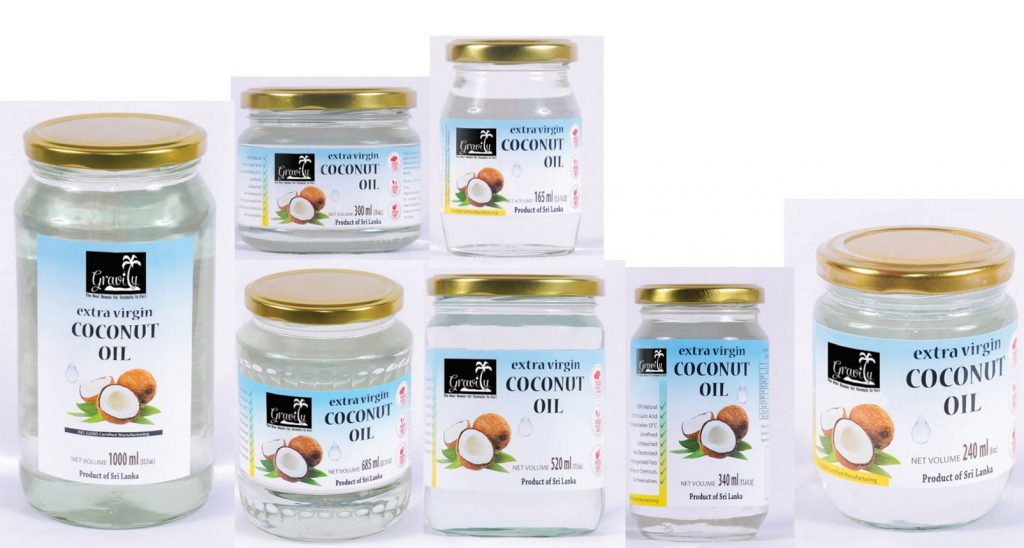

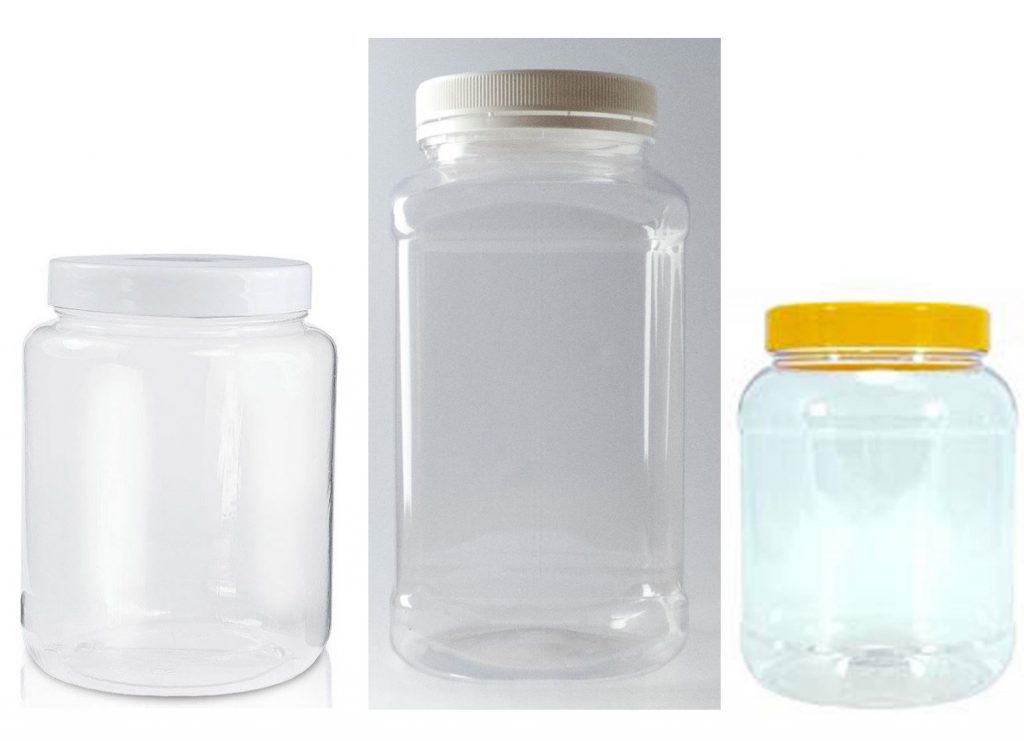

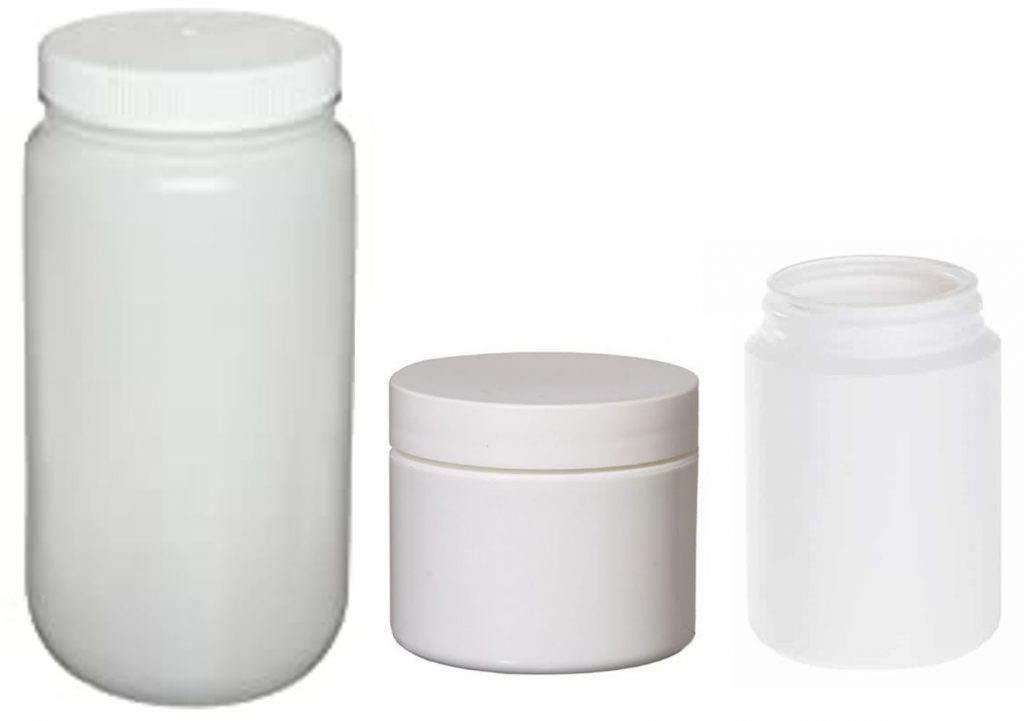
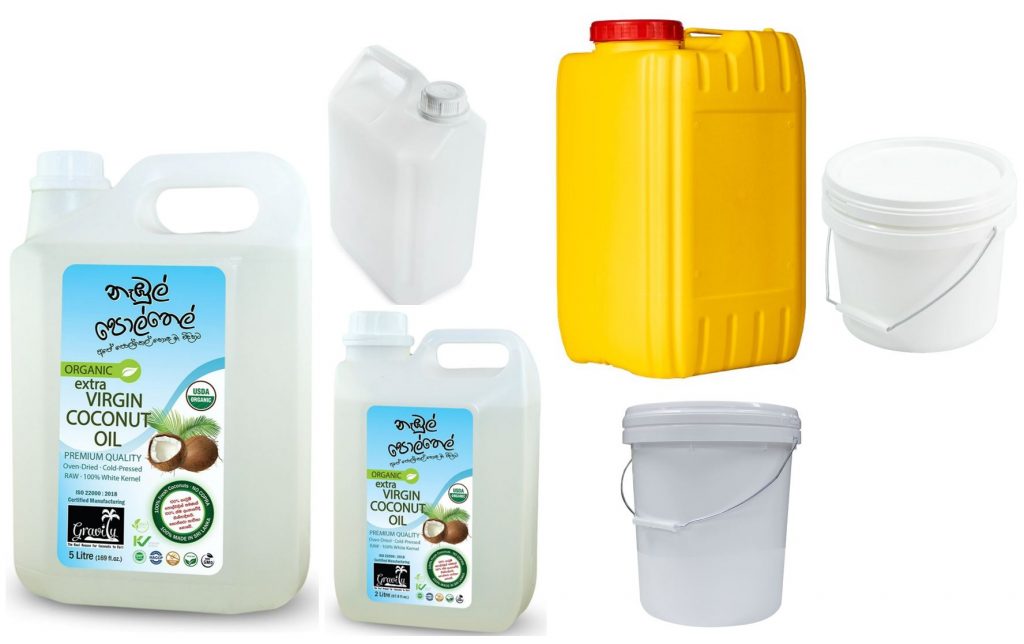

Organic Whole Kernel Virgin Coconut Oil -Whole Kernel | Raw Cold Pressed
Whole Kernel virgin coconut oil is the raw cold pressed oil from the entire coconut kernel (white flesh together with the brown peel).
Since the brown testa is peeled off, to produce one liter extra virgin coconut oil it needs 14 fresh coconuts. The brown testa (“Kurutta”) is removed in EVCO and only the white flesh is used. But in whole kernel virgin coconut oil, the entire kernel is used. So it needs only 10 fresh coconuts to produce liter of oil. Because in the brown testa (or the peel) it has considerable amount of coconut oil.
The manufacturing cost is lower in WKVCO and it has stronger coconut taste and aroma compared to the mild aroma of EVCO.
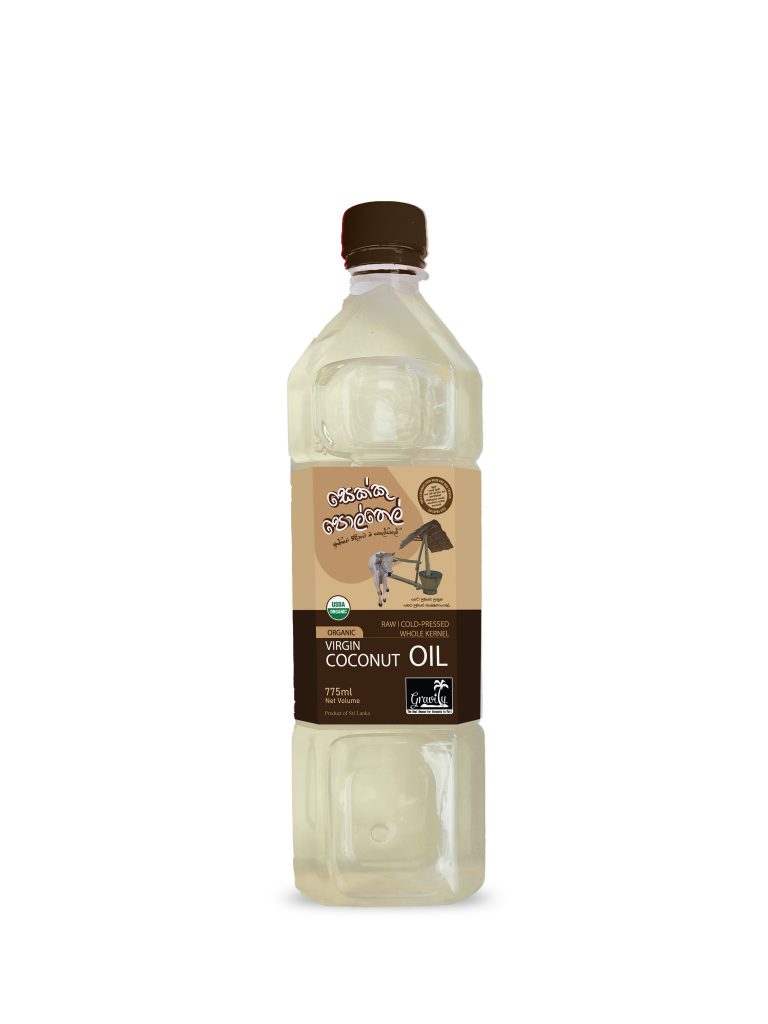
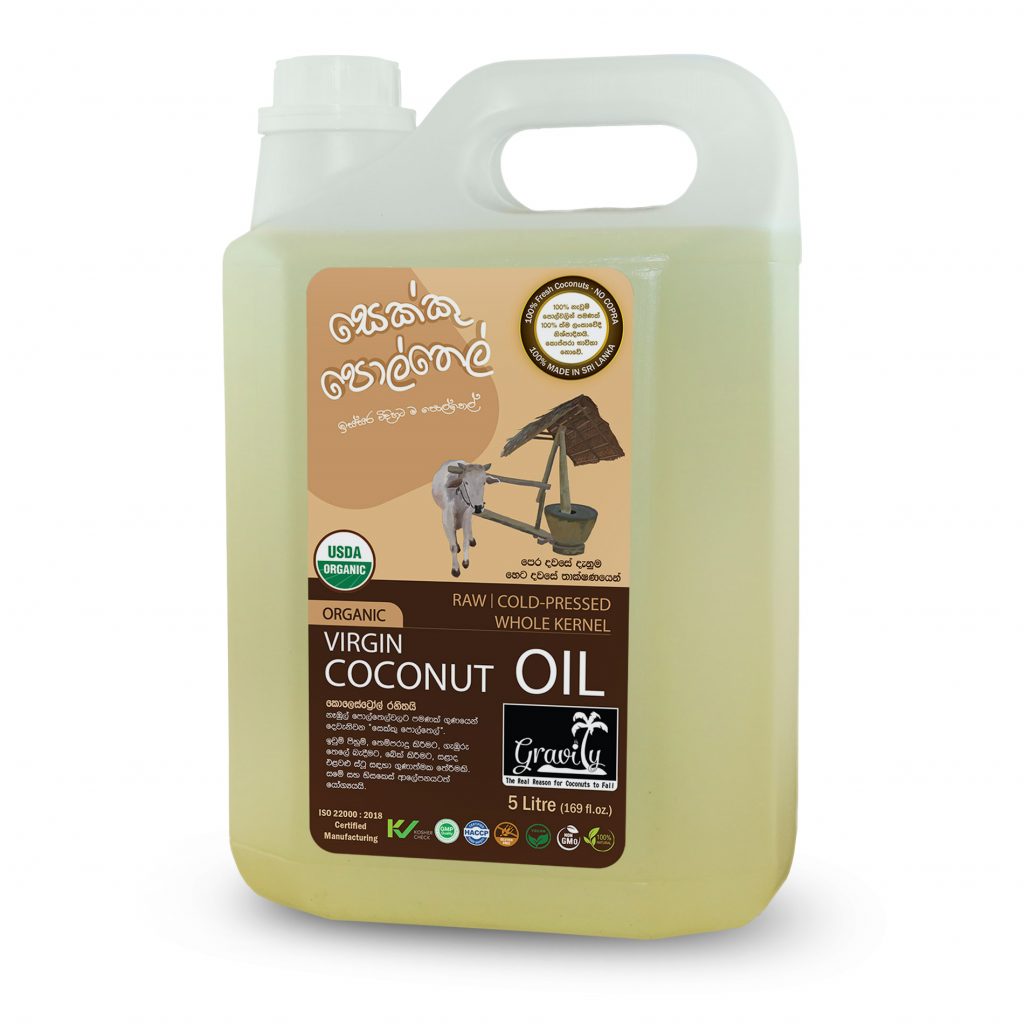
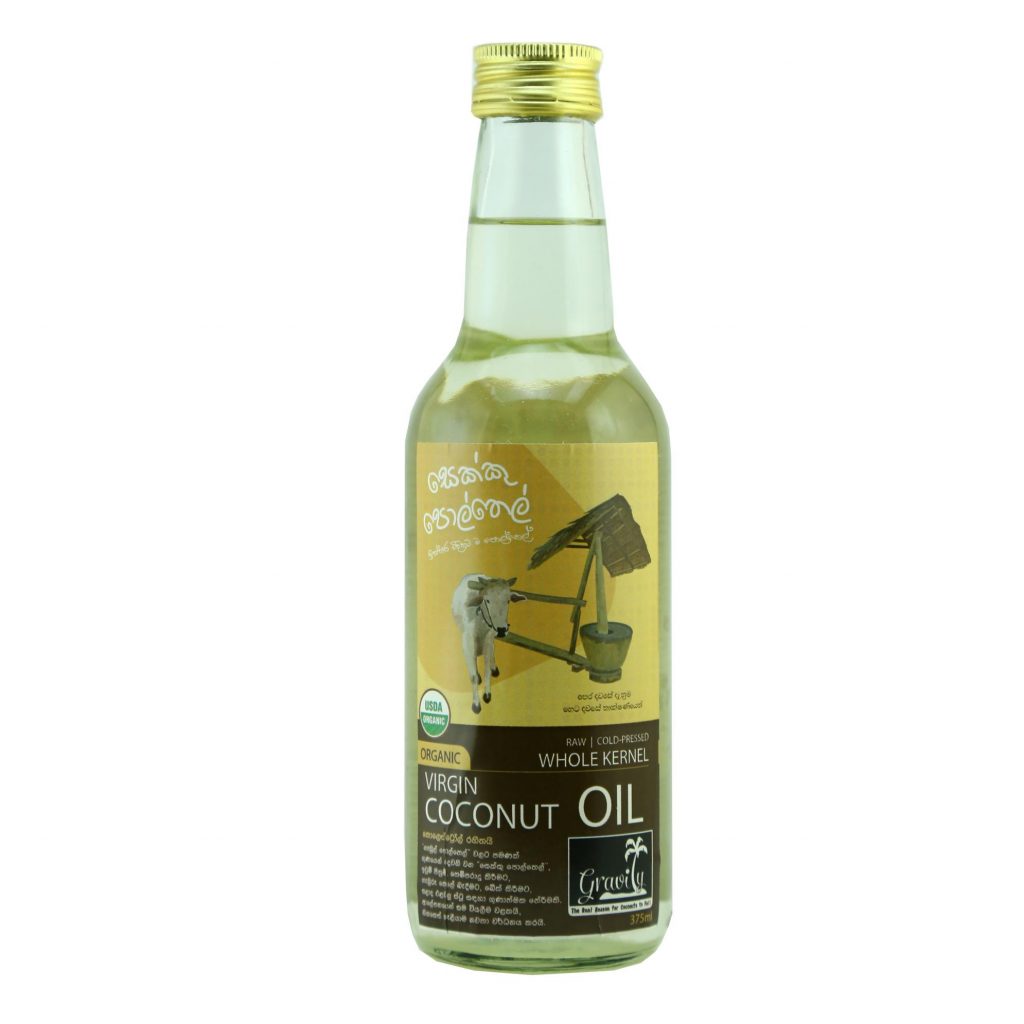
White Coconut Oil (Pure Coconut Oil)
Yellow color is the result of heat generation inside grinding machines. Plus the fact that they are produced from Copra (Not fresh coconuts). “Copra” is the name used to define coconut flesh dried under sunlight for several days. Heating up to high temperatures takes out a part of natural goodness. like cold press expellers are used in virgin coconut manufacturing, “Anderson” type heavy expellers are used in normal coconut oil manufacturing. And it is a heated press in such type of expellers.
The term “White” is used because, sometimes coconut oil is pressed only using brown peels (kurutta, testa or parings). This oil is named “Paring Oil / Brown testa Oil” (Kurutu Thel). When coconut oil is pressed using the entire kernel (both white flesh and paring) it is called “White Coconut Oil” (Sudu Polthel). It is a word used to differentiate between the two types based on the material used for pressing out oil. It does not refer to the color of the oil.
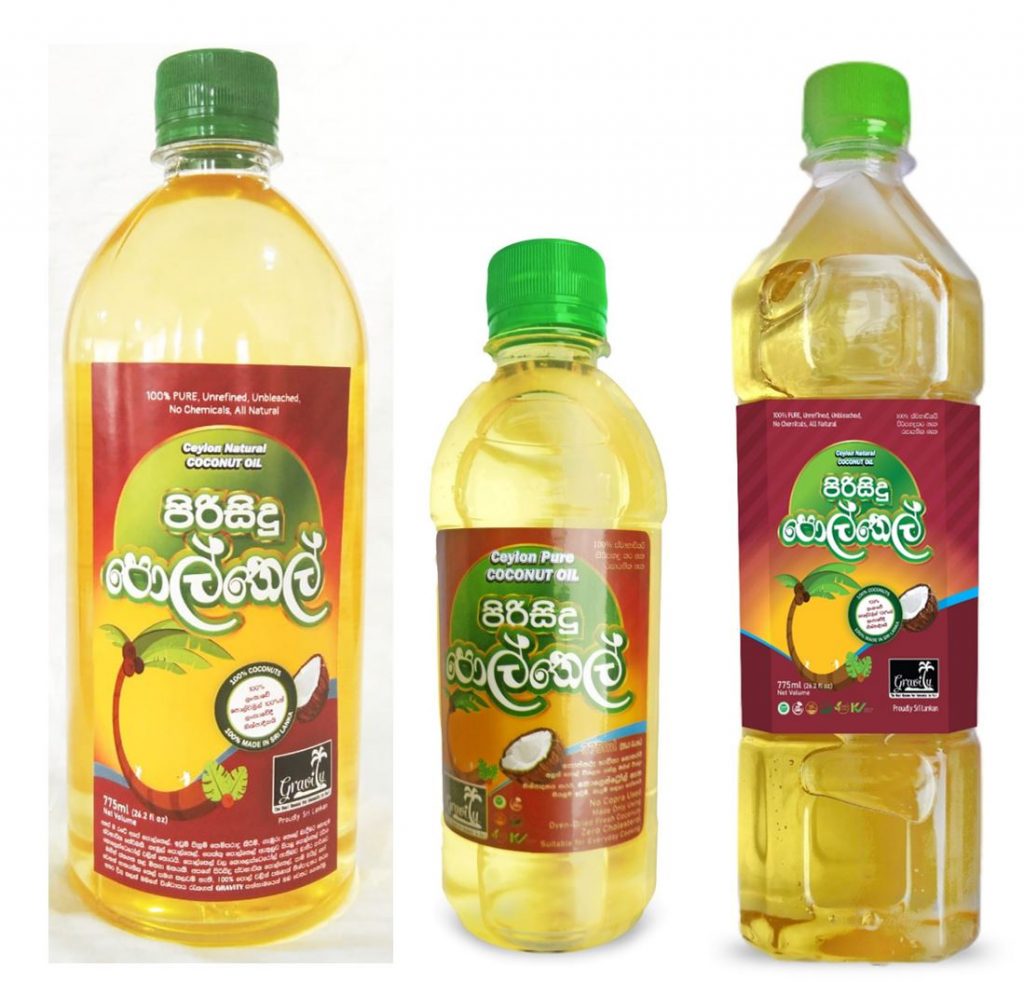

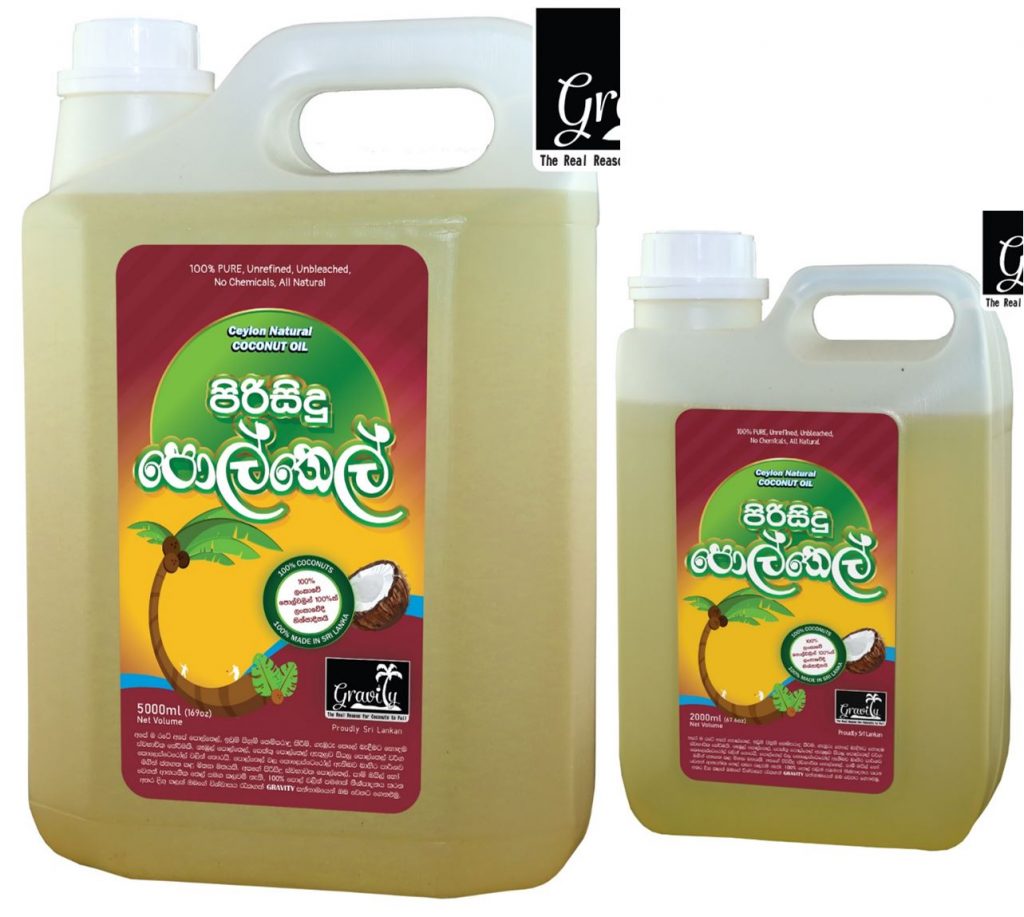
Paring Coconut Oil (Kurutu Thel)
In desiccated coconut, coconut milk and virgin coconut oil industries, the coconut paring (the brown peel around the white flesh) is removed and moved out of the facility. These parings also have a significant percentage of oil content.
These parings are collected separately and pressed in a Anderson type general expeller to make paring coconut oil. It is used as the lowest cost option for deep frying, cooking applications.
Refined Coconut Oil (RBD Coconut Oil)
The problem with normal coconut oil when used for Chinese rolls, Fried rice and Chillie paste is that it becomes rancid soon when it gets into contact with moisture of other food ingredients and gives out the coconut smell. It is sometimes unpreferable and rejected by the consumers of such recopies.
So Normal coconut oil is heated, sent through coconut charcoal, filtered to remove coconut smell, taste, and free fatty acids which cause quick rancidity. This also increases smoke point up to 220 degrees Celsius (430 Fahrenheit) making it suitable for extreme deep frying and mass scale cooking industries.